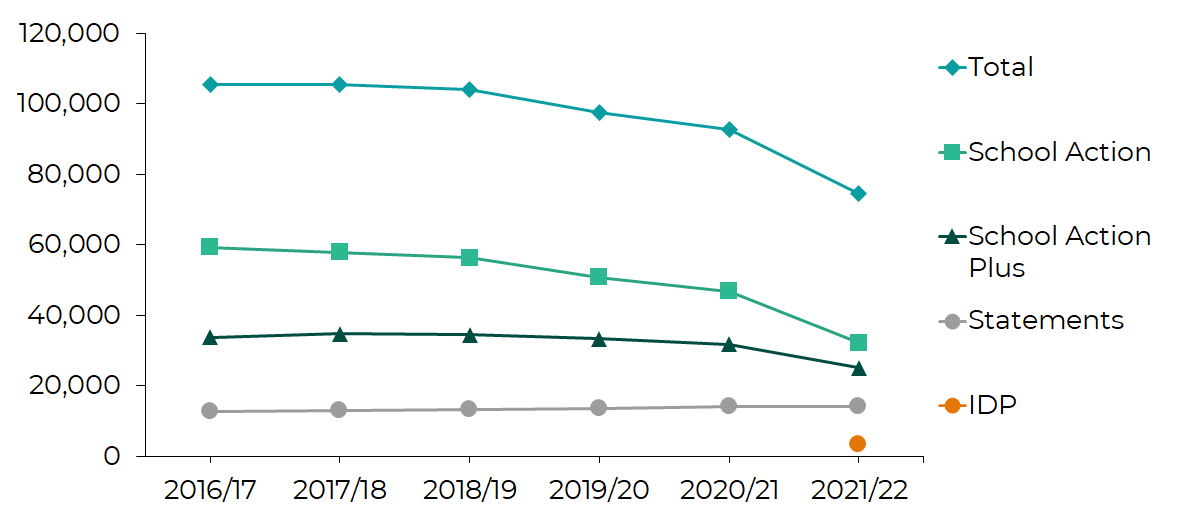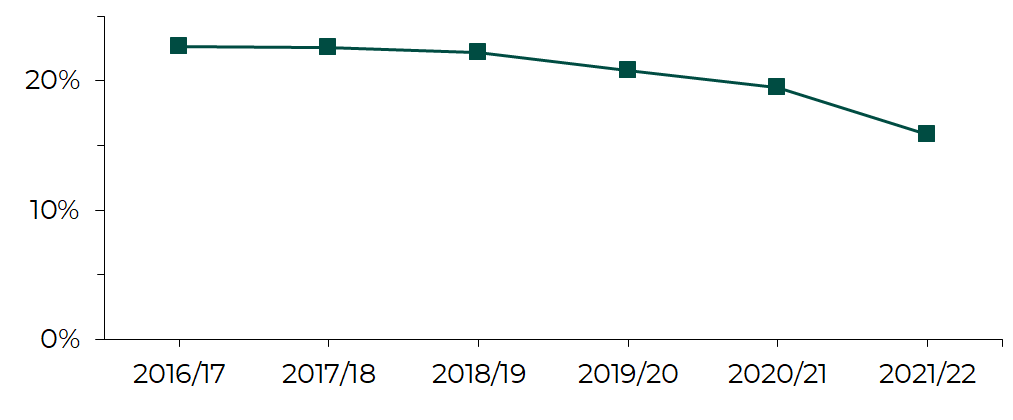The Welsh Government has revealed, under scrutiny by a Senedd Committee, that it believes some cases of Special Educational Needs (SEN), or Additional Learning Needs (ALN) as they are now called, were incorrectly identified and over-reported in the past. It says this is why numbers of learners with SEN/ALN have fallen in the past year, now the new ALN system has begun.
Implementation is being phased over three years (September 2021 – August 2024), meaning both the SEN and ALN systems will operate alongside each other until September 2025 (hence references to “SEN/ALN”).
The definition and test for ALN is the same as SEN
The legislation, which established the new system, keeps the same definition for ALN as for SEN, which applies where a child:
- has a significantly greater difficulty in learning than the majority of others of the same age (that can’t be addressed solely through differentiated teaching), or
- a disability (for the purposes of the Equality Act 2010) which prevents or hinders them accessing education or training generally provided for others of the same age, and
- the learning difficulty or disability calls for Additional Learning Provision (ALP).
All learners with ALN who have moved to the new system are entitled to a statutory Individual Development Plan (IDP). This is different from the current SEN system where only learners with the most severe/complex needs have legally enforceable ‘statements’ setting out the support they are entitled to and the remaining majority of those who were identified as having SEN have more limited non-statutory plans.
Concerns were raised during previous Senedd scrutiny that the resources required to deliver IDPs for all learners with ALN (historically around 100,000) could result in a ‘raising of the bar’, i.e. the threshold for identifying a learner as having ALN would be higher than for SEN, despite the definitions being the same. Seeking to allay these concerns, the then Minister for Education, Kirsty Williams, told the Senedd in March 2021 she “[did] not believe that the reforms will raise the bar for the provision of an IDP” as “the test to decide who has ALN has not changed”.
Welsh Government implementation guides confirm “the definition of ALN is the same as SEN”, which means “if a child has SEN, it is likely that they will have ALN”. Following concerns expressed by the National Deaf Children’s Society, the current Minister for Education, Jeremy Miles, said in January 2022 “IDPs are for learners with all levels of ALN – from milder through to complex needs”.
What has happened to numbers of learners with SEN/ALN?
The number of pupils in schools identified as having SEN/ALN decreased by 20% between 2020/21 and 2021/22, coinciding with the start of the new system.
There are now 18,000 fewer learners identified as having SEN/ALN (92,668 in 2020/21, 74,661 in 2021/22). This is reflected in a decrease in learners with low to moderate ALN – those supported under School Action, the lowest of three tiers of intervention. The number of pupils with statements (i.e. those requiring the highest level of interventions) has remained the same so there isn’t any suggestion those with the greatest need for support have been ‘disidentified’ with SEN/ALN.
Figure 1: Number of school pupils identified as having SEN/ALN by level of intervention

Source: Welsh Government, School census results (several years’ editions)
The removal of some pupils from the SEN/ALN register brings the proportion of all pupils identified as having SEN/ALN down from 20% in 2020/21 to 16% in 2021/22.
This continues a generally downward trend, although the rate of decrease was much sharper last year.
Figure 2: Percentage of all pupils identified as having SEN/ALN

Source: Welsh Government, School census results (several years’ editions)
The Welsh Government offered three possible reasons in a statistical release and to the Children, Young People and Education (CYPE) Committee in July, which suggested either:
- SEN has been historically over-reported, partly due to the inclusion of a learning difficulty category which on reflection does not actually amount to SEN/ALN;
- The new statutory ALN co-ordinators have reviewed their schools’ SEN registers and seen fit to remove some learners with the lowest levels of needs.
- The more inclusive approach of the new Curriculum for Wales means some learners who previously required Additional Learning Provision (ALP) can have their needs met through universal provision.
The CYPE Committee sought clarity from the Minister, asking how this corresponds with the Welsh Government’s previous policy intentions, given it has refuted predictions of a raising of the bar. The Welsh Government said during passage of the ALN Bill in 2017 those covered under the new system would be broadly the same as before and when making subsequent regulations in 2021, it anticipated there would be “around 110,000 school-age IDPs”.
The definition and test for ALN/SEN is now being applied more rigorously than under the old system
The Minister’s response to the CYPE Committee confirms that if a child has SEN they are also likely to have ALN and maintains this has been its position all along. Only those learners who were “appropriately placed” on the SEN register in the past will be recognised as having ALN and given an IDP. The Minister says many pupils who had ‘general learning difficulties’ were previously included on the SEN register (and therefore in annual published data) despite not “meet[ing] the legal definition of having SEN or ALN”.
The “appropriate removal” of these groups of pupils has contributed to the decrease in the number of learners recorded in 2021/22 as having SEN/ALN. The Welsh Government says it has been “necessary to revise the registers” due to “inconsistencies in how SEN was reported and registered in the past, with a likely over-identification”. These perceived inaccuracies included both the inclusion of those with ‘general learning difficulties’ but not SEN/ALN, as well as some learners with short-term needs receiving time limited support who remained on SEN registers long after interventions had ceased. The Welsh Government says it is exploring how to track pupils removed from the SEN/ALN register to ensure their education is not negatively affected.
For all of these reasons, it appears the definition and test for ALN under the 2018 Act, whilst the same as the previous legal definition of SEN, is now being applied more rigorously. The Minister states that “it is not so much that the ALN system has ‘raised the bar’, rather that the bar had been lowered in some settings under the previous system”.
However, some may ask why it is only now at the implementation stage the supposed over-reporting of SEN has been uncovered. They may also question whether the new ALN system is being implemented in the way the Welsh Government said it would when taking the legislation through the Senedd. For example, the National Deaf Children’s Society has already voiced concerns that the threshold of eligibility for support is being raised.
The CYPE Committee will continue to scrutinise this issue and is inviting evidence and views on an ongoing basis.
Article by Michael Dauncey, Senedd Research, Welsh Parliament






